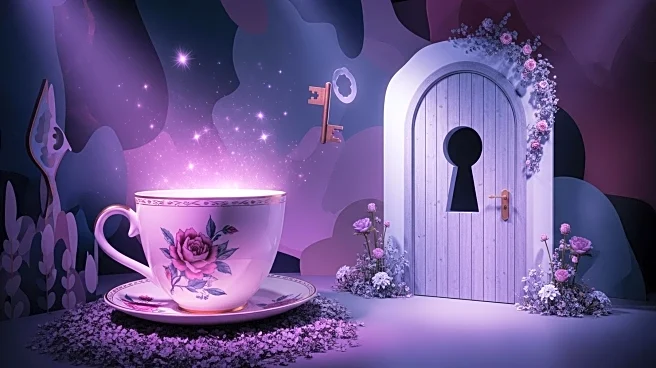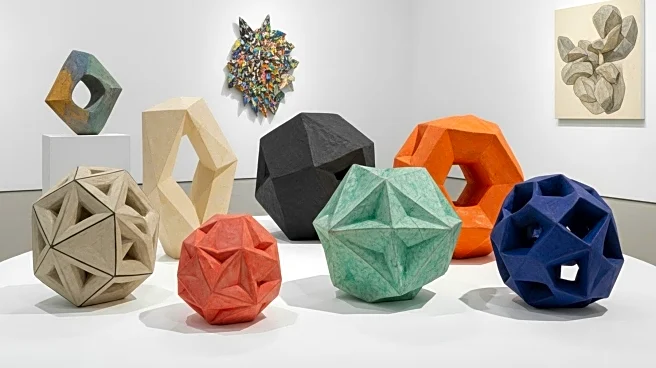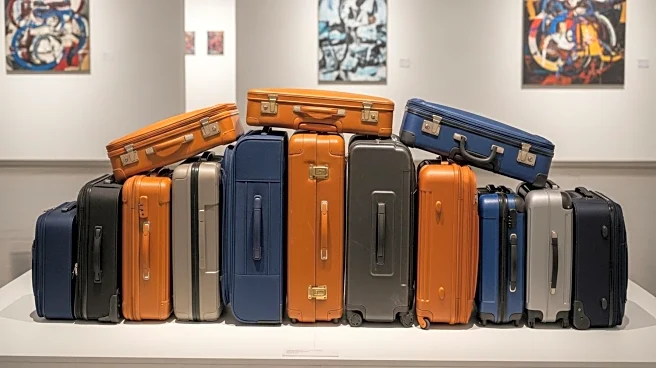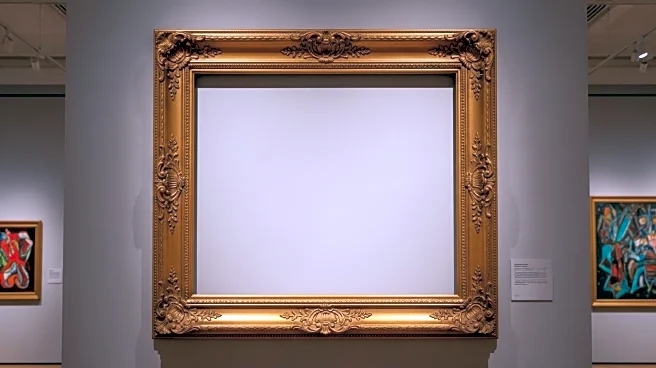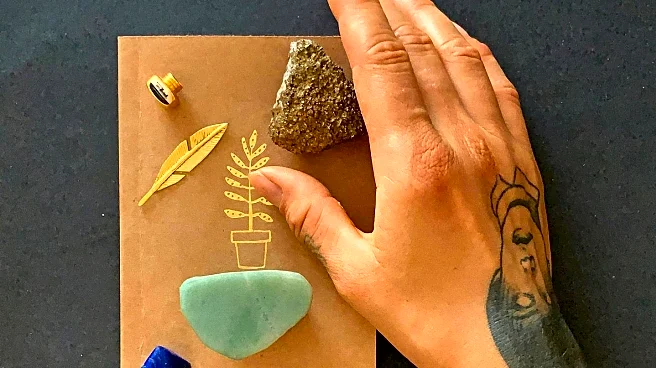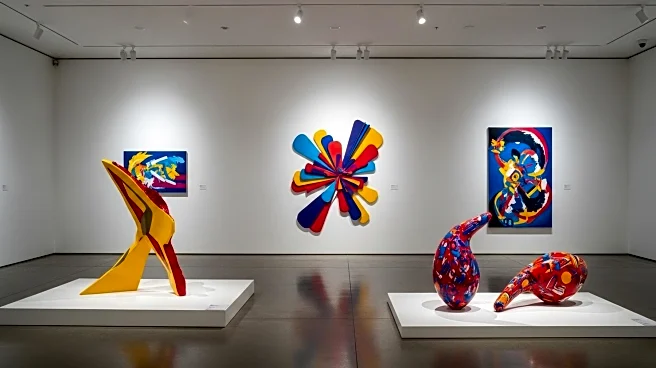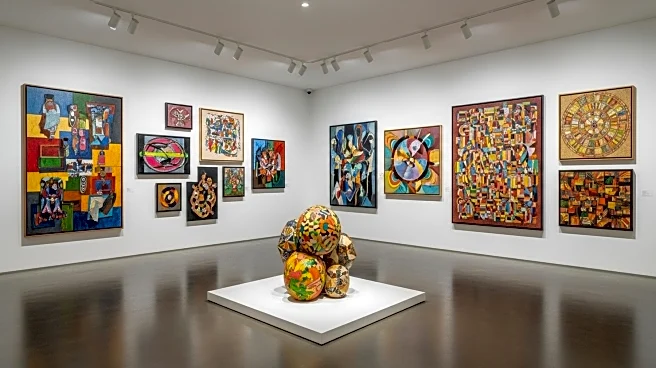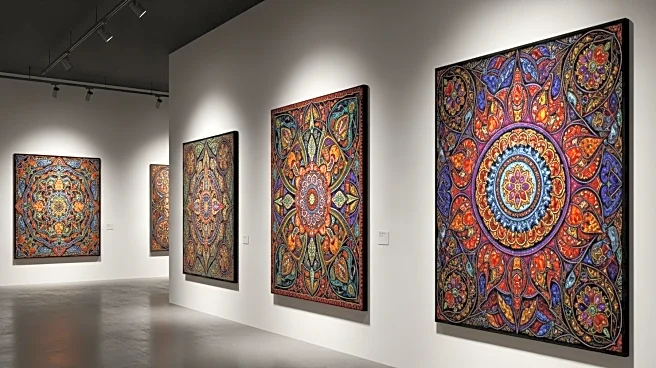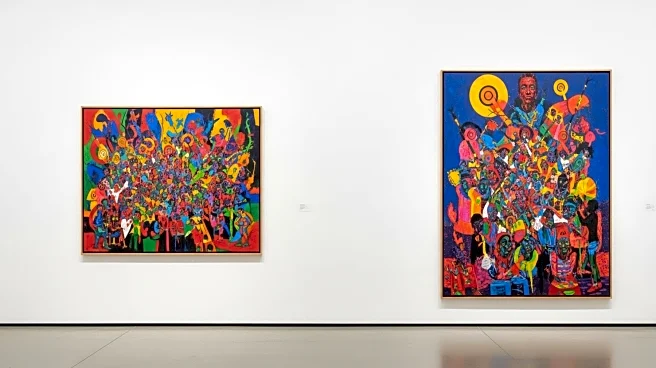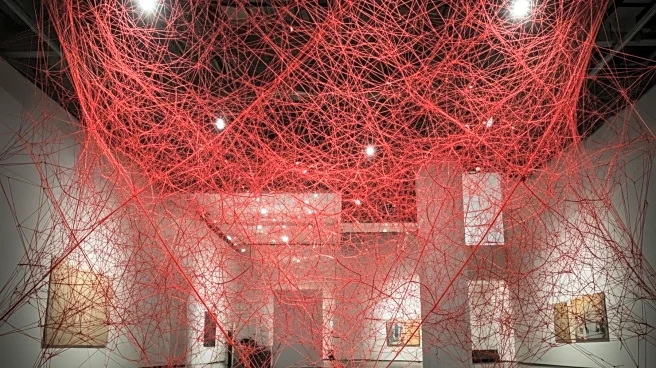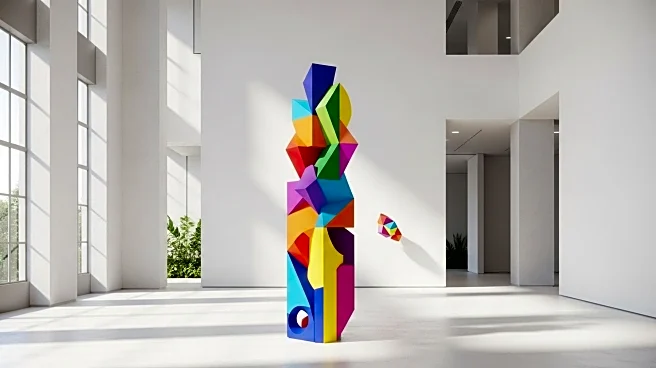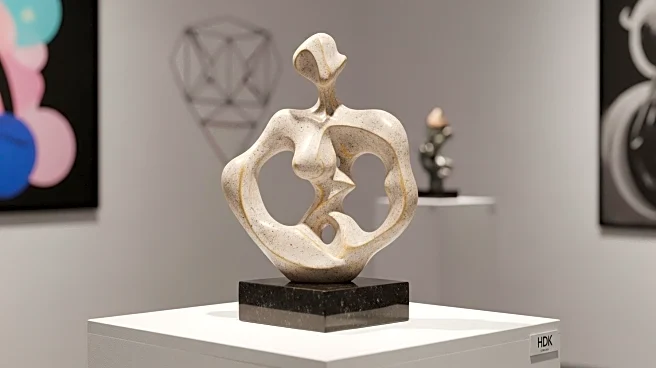What is the story about?
What's Happening?
Artists Elmgreen & Dragset have launched a new exhibition at Pace LA, inspired by Alice in Wonderland syndrome (AIWS), a neurological disorder affecting perception of scale. The exhibition features installations such as a silicone gallery assistant asleep at her desk, men in VR goggles embracing, and circular paintings of the sky embedded with mirrors. These works are presented at full scale and half-scale in different rooms, challenging traditional gallery settings. Elmgreen & Dragset, known for their humorous and queer lens, aim to alter the viewer's role and empower spectators through their art. The exhibition also includes a talk by novelist Ottessa Moshfegh, adding a literary dimension to the event.
Why It's Important?
The exhibition highlights the intersection of art and neurological phenomena, offering a unique perspective on perception and reality. By referencing AIWS, Elmgreen & Dragset bring attention to how exhaustion can alter one's perception, making the exhibition relevant in today's fast-paced world. Their work challenges conventional art spaces, encouraging viewers to reconsider their interactions with art and space. This approach not only enriches the cultural landscape but also fosters dialogue on mental health and perception. The inclusion of Ottessa Moshfegh adds depth, connecting literary themes with visual art, and broadening the audience's engagement.
What's Next?
The exhibition is expected to spark discussions on the role of perception in art and everyday life. As Elmgreen & Dragset continue to challenge traditional art spaces, their work may influence future exhibitions and inspire other artists to explore similar themes. The collaboration with Ottessa Moshfegh could lead to further interdisciplinary projects, blending literature and visual art. The exhibition's unique approach may attract diverse audiences, potentially increasing interest in neurological disorders and their impact on art and perception.
Beyond the Headlines
The exhibition's reference to AIWS raises ethical questions about the representation of neurological disorders in art. It prompts discussions on the responsibility of artists to accurately portray such conditions and the potential impact on public understanding. Additionally, the exhibition's focus on altering perception challenges societal norms, encouraging viewers to question their own realities and the structures of power that shape them. This could lead to broader cultural shifts in how art is perceived and valued.
AI Generated Content
Do you find this article useful?
